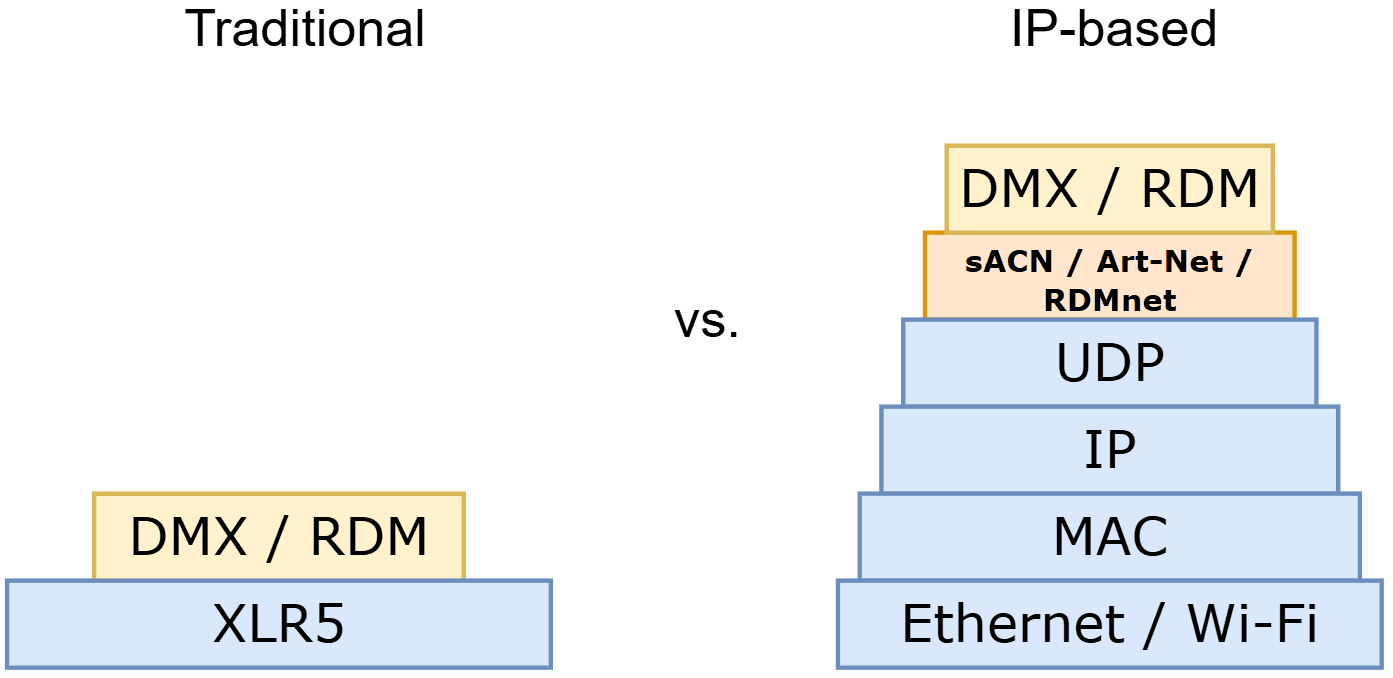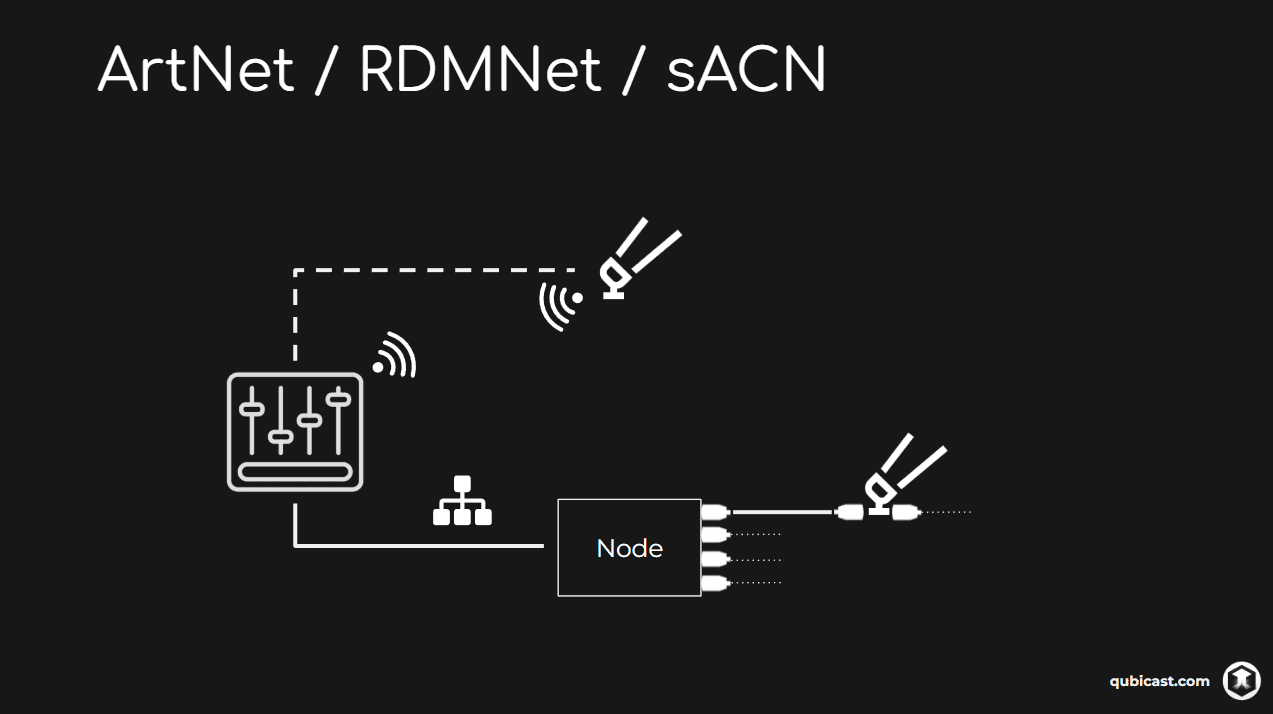For lighting technicians familiar with DMX and RDM, IP-based lighting networks such as sACN and Art-Net represent the next evolution in stage lighting control. While the shift might seem complex initially, understanding the underlying principles can unlock significant enhancements in scalability, flexibility, and control for complex lighting designs.
DMX512 allows a lighting console to communicate with devices using a daisy-chain network, where a single DMX512 "universe" comprises 512 channels, each controlling a specific lighting parameter with a value between 0 and 255. RDM (Remote Device Management) enhances DMX512 by adding bi-directional communication, enabling remote configuration, status reporting, and device identification. You can read more about the evolution and history of lighting control standards in our first article.
One DMX cable, also called XLR cable for its plug, can be used only for a single universe of 512 channels. However, DMX512's limitations become apparent in larger setups or with high-class modern lighting equipment. Take the ROBE Robin iSpiiderX, for example, using 123 DMX channels on a single fixture. In their full RGBW mode, you can only chain four of them on a single XLR5 cable when using plain old DMX.
Art-Net and sACN address this limitation by allowing thousands of DMX universes to be transmitted via a single Ethernet cable or even wireless. They use the same technology known from modern computer networks as their foundation: the Internet Protocol (IP). The following graphic shows the difference between the two network stacks:

In the following table, we show the main feature differences between traditional (DMX / RDM over XLR5) and IP-based lighting networks:
Easy transition to IP-based networks
The great thing: You do not need to upgrade all of your equipment at once. You don't even need a single luminaire that supports sACN to begin using sACN! You can start by buying a so-called node, which is a device that has network ports for one Ethernet cable and one or more DMX (XLR5) cables. Connect your lighting control panel (that hopefully speaks sACN) via Ethernet to the node. The node will transfer DMX data from sACN to the DMX cable, leaving your luminaires oblivious to the fact that they are now getting data that was transferred via IP.

To start with IP-based lighting control networks:
- Begin upgrading only a small section of the lighting system
- Familiarize yourself with IP addressing and network configuration.
- Use software like QubiSet to simplify network setup and maintenance
By understanding the fundamentals of IP, and protocols like sACN and Art-Net, you will leverage the advanced capabilities of modern stage lighting systems in no time.










